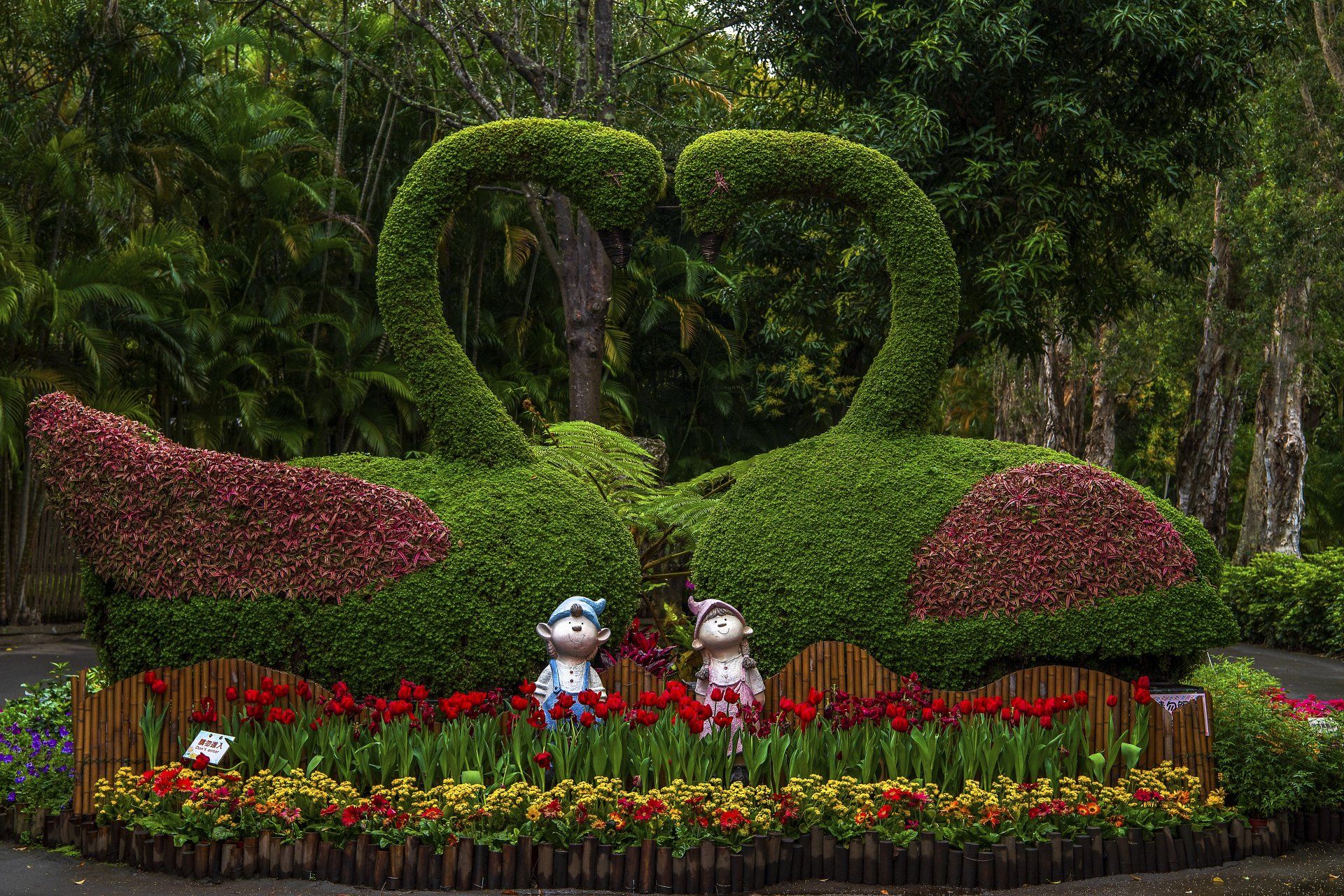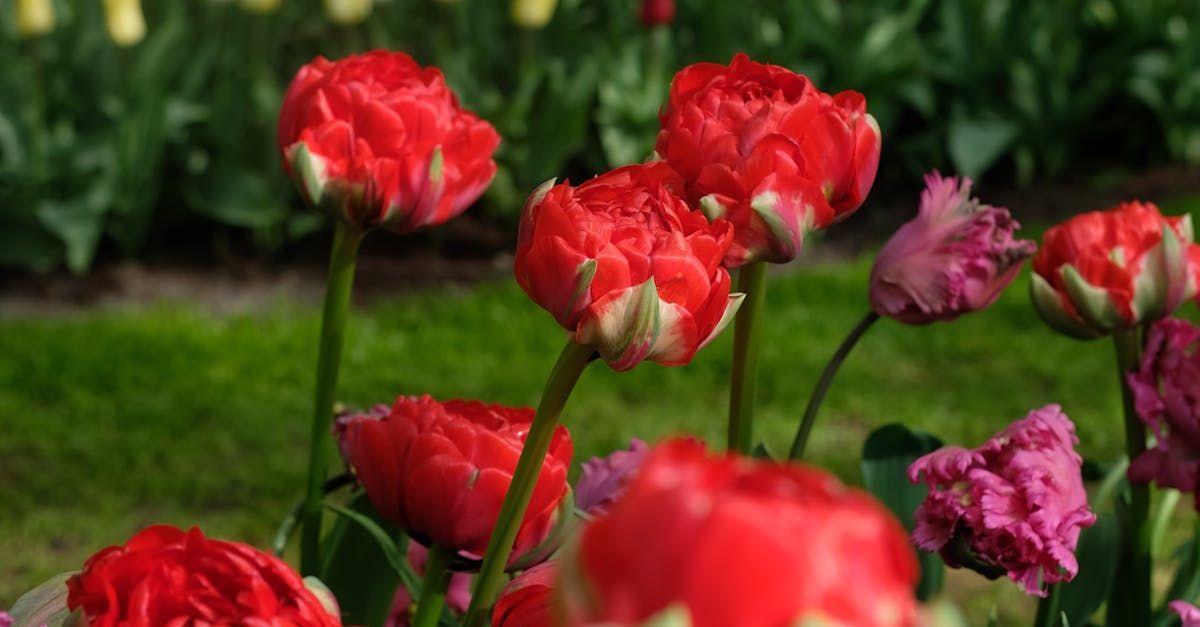Elements of Softscaping
Know what materials to use, plant life that will flourish, grass that will actually grow, specific blooming seasons, and the list goes on for creating the perfect backdrop to your house when you trust in us to help make those decisions along side you.
What are examples of Softscaping?
Softscaping is a style that focuses on incorporating natural elements into outdoor spaces to create a harmonious and visually appealing environment. It involves the use of plants, flowers, shrubs, trees, and other organic materials to enhance the aesthetic appeal of a landscape.
The emphasis is on creating a balanced and inviting atmosphere by carefully selecting and arranging plants. The goal is to create a seamless integration between the natural and built elements of a space. Softscaping can include the use of flower beds, planters, hedges, and ground cover to add texture, color, and depth to a landscape.
One of the key features is the use of plants to create focal points and visual interest. This can be achieved through the use of flowering plants, ornamental grasses, or unique and exotic species. By strategically placing these plants, you can create a sense of flow and movement throughout the space.
Softscaping also takes into consideration the overall theme and style of a landscape. Whether it is a formal garden, a cottage-style, or a tropical oasis, softscaping can be tailored to suit any design preference. It is a versatile and flexible approach to design that allows for personalization and customization.
Other examples to consider when planning out your idea would be adding bulk materials such as gravel, sand, mulch, soil, and compost mixtures.
Overall, softscaping is a decorative style that aims to create a lush and inviting outdoor space by incorporating natural elements. It is a way to bring beauty, tranquility, and a sense of harmony into your life. Whether it is a small garden or a sprawling estate, softscaping can transform any space into a stunning and visually appealing environment.

Tips to Start Your Softscape Design

- Begin your softscape design by outlining the framework of your outdoor space, focusing on the structural aspects first. This initial planning will help establish boundaries and provide a solid foundation for the subsequent addition of softscape elements.
- Achieve equilibrium in your design, ensuring a harmonious blend between hardscape and softscape features. Striking the right balance is crucial, as an excess of either can result in an unappealing and cluttered appearance. Gradually introduce plants to gauge the optimal amount of softscaping for your specific area.
- Soften hard edges by strategically placing flowers and tall grasses near patios or walkways. This thoughtful arrangement adds a touch of coziness, making your outdoor space feel inviting and well-integrated.
- Factor in the maintenance requirements of your softscape choices. Tailor your plant selections to match your gardening skills, available time, and local climate. Opt for low-maintenance perennials or resilient succulents in arid regions, ensuring a sustainable and visually pleasing landscape.
- Allow ample space for growth, recognizing that softscape elements are dynamic and ever-changing. Unlike the permanence of hardscape structures, plants evolve over time. Consider the future growth of shrubs, flowers, vines, and other softscape components to ensure a landscape that remains vibrant and adaptable.
For those starting a softscape design with a landscaper, initiate the process by collaborating closely with professionals who can assess your space, understand your preferences, and provide expert advice on plant selection and arrangement. Communicate your desired aesthetic and functionality, allowing the landscaper to tailor softscape elements to suit your vision and create a thriving outdoor environment.
Softscaping Questions for your Georgetown Lawncare in Texas
-
What is softscaping?
Softscaping refers to the use of living elements such as plants, trees, flowers, and shrubs to enhance the beauty and functionality of outdoor spaces.
-
How do I choose the right plants for my softscape design?
Consider factors such as climate, soil type, sun exposure, and water availability, as well as the desired aesthetic, maintenance level, and purpose of the landscaping.
-
What are the benefits of incorporating softscaping into outdoor spaces?
Softscaping can improve air quality, provide shade and privacy, reduce noise pollution, attract wildlife, and enhance the overall ambiance and value of a property.
-
How do I create a cohesive softscape design?
Start by establishing a focal point or theme, then select plants that complement each other in terms of color, texture, height, and seasonal interest. Consider using repetition and layering to create visual harmony.
-
What is the difference between annuals and perennials in softscaping?
Annual plants complete their life cycle within one growing season and must be replanted each year, while perennials return year after year, often becoming more robust over time.
-
How do I ensure proper maintenance of softscape elements?
Regular watering, pruning, fertilizing, and mulching are essential for maintaining healthy plants. It's also important to monitor for pests, diseases, and weed growth and address any issues promptly.
-
Can softscaping be used to address environmental concerns such as erosion control or stormwater management?
Yes, softscaping techniques such as planting ground cover, installing rain gardens, or creating bioswales can help mitigate erosion, absorb excess water, and improve soil health.
-
How do I design a softscape that attracts pollinators and beneficial insects?
Choose plants with nectar-rich flowers and diverse blooming periods to provide food and habitat for bees, butterflies, and other pollinators. Avoid using pesticides that may harm beneficial insects..
The regions leading professionals in landscaping, design and lawn care services
All Rights Reserved | Georgetown Landscaping
Locations: